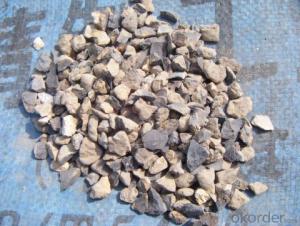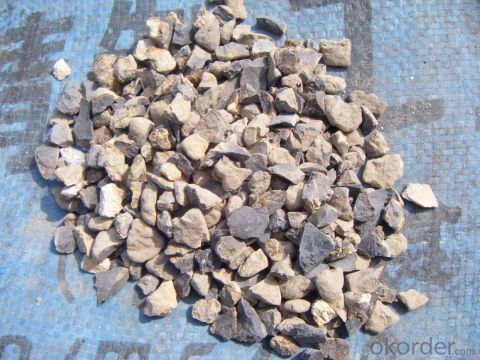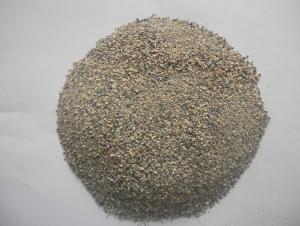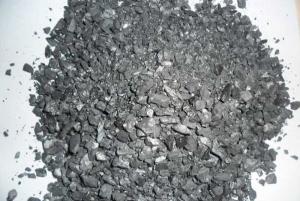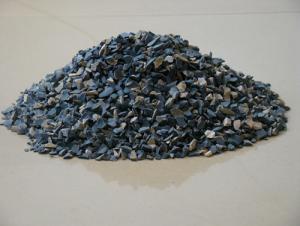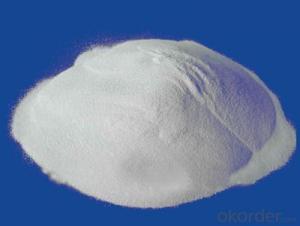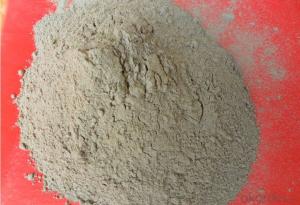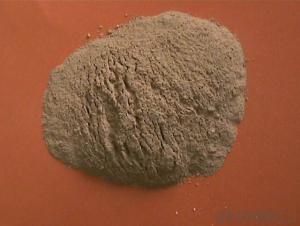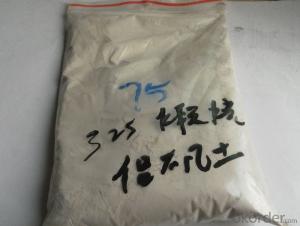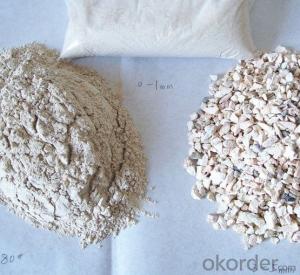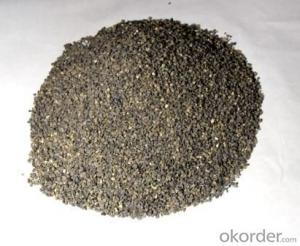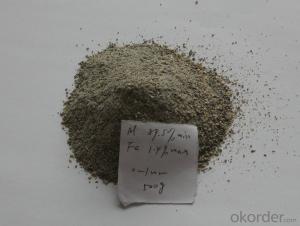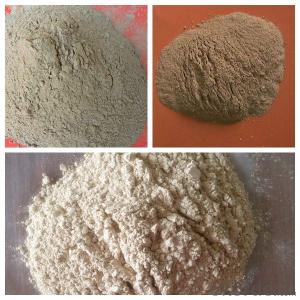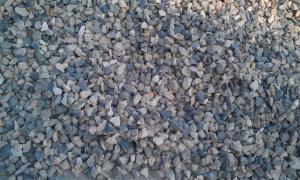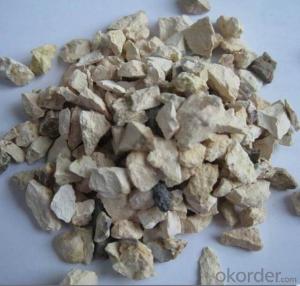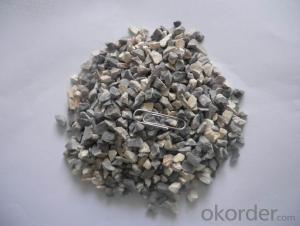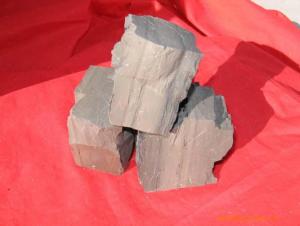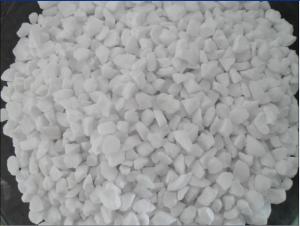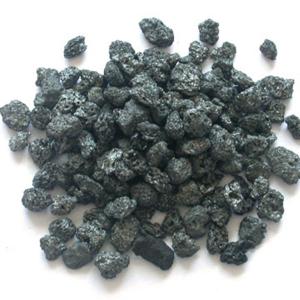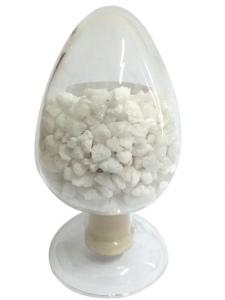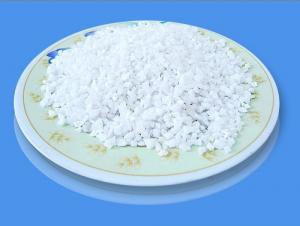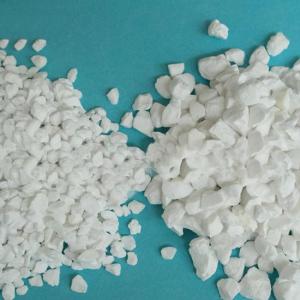Raw Materials for Refractory:Rotary Kiln / Round Kiln Calcined Bauxite for Fire Bricks
- Loading Port:
- China main port
- Payment Terms:
- TT OR LC
- Min Order Qty:
- 25 m.t.
- Supply Capability:
- 2000 m.t./month
OKorder Service Pledge
OKorder Financial Service
You Might Also Like
Pack
| Packaging Details: | 1.25kg/Bag 2.As your demands |
| Delivery Detail: | 30 days after down deposit |
Al2O3 85% Rotary Kiln Calcined Bauxite for Refractory Castables
Specifications&Data
What is the details of our steel fiber reinforced refractory castable?
Steel fiber reinforced refractory castable is a special castable which is added steel fiber into the castable,can improve the toughness,mechanical strength,thermal shock resistance and spalling resistance.
What is the Feature of Our steel fiber reinforced refractory castable?
1.High mechanical strength,
2.Good thermal shock resistance,
3.Good toughness and anti-stripping,
4.High refractoriness,
5.Tiny linear variation,no cracking,
6.Resistant to scour and erosion,
7.Good volume stability under high temperature.
What is the Applications of our steel fiber reinforced refractory castable?
Steel fiber reinforced refractory castable is mainly used in heat treatment furnace,heating furnace,soaking pit furnace,tundish slag dam weir,seconclary refining and the catalytic cracking unit etc key part of kiln furnace and thermal equipment.
What is the Technique Data of our steel fiber reinforced refractory castable?
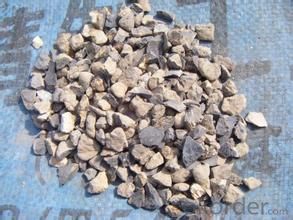
Company Information
CNBM International Corporation (CNBM International) is the most important trading platform of CNBM Group Corporation, a state-owned company under the direct supervision of State-owned Assets Supervision and Administration Commission of the State Council.
Since 2004, the trading volume of CNBM International has been doubled in 5 successive years owing to the support of superior corporations and effort of all staff. Meanwhile, we have established strategic partnerships with hundreds of domestic manufacturers and sound business relations with clients from over 120 countries. Currently, we have wholly-owned overseas subsidiaries and branches in 5 countries with a view to realize localization, which also represents an essential progress in our globalization target.
In line with the business, CNBM International launched E-business platform Okorder.com.
- Q: What is unshaped refractory?
- Unshaped refractory is a mixture made of aggregate and powder, binder or other admixture. It can be used directly or after proper liquid mixing. The material is a new type of refractory material after calcination, the refractoriness of not less than 1580 DEG C unshaped refractory materials by various varieties, production method and use method thereof can be divided into concrete, pouring material, plastic, ramming material, gunning, casting material, coating material, dry ramming material fire, mud, all kinds of repairing materials (with asphalt surface patch charge, Ma Dingsha) also do not belong to the shape of the column.
- Q: Concrete composition and function of magnesia bond used in refractory
- The main component of magnesia binder is silica powder and six partial, the mechanism is gel combination, and six can react with magnesium (basic refractory) to produce complex compound, and improve the strength of products
- Q: What's the function of aluminium dihydrogen phosphate on the refractories?
- Mainly used for binder of high-temperature furnace refractory. Characteristics of liquid aluminum dihydrogen phosphate, castable. solid used for refractory spraying coating, chamotte, ceramic construction, which has high break resistance after being dried in 350-500 ° C, phosphate bricks. Characteristics of the solid aluminum dihydrogen phosphate, binding agent used for castable and casting industry: together with the refractory aggregate, ramming mixes at room temperature: Easy to mix, crush resistance, hydration resistance, chamotte, will not become soft even if soaked or boiling in water, molding. Liquid use refractory spraying coating, mainly used for corundum, chrome corundum water gap in refractory industry. The production of chrome aluminum zirconium corundum brick for water-coal-slurry gasifier is especially suitable for site construction applications mainly used for the electrical industry, high-temperature kiln and furnace, hardener, after mixing between 90-110 ° C for 4-24 hours at a constant temperature, forming strong bonding strength, electrical insulation, heat treatment resistance furnace
- Q: Why does refractory need to add coarse firstly and then add fine aggregate?
- Binding agent can wrap particles and improve binding effect.
- Q: What kind of material is refractory fiber?
- Refractory fiber, also known as ceramic fiber, is a fibrous thermal insulation refractory. It has the characteristics of ordinary fibers, such as softness, flexibility, having a certain tensile strength. And it can be further processed into a variety of products such as paper, wire, rope, tape, blankets and felts. Besides, it has high temperature resistance and corrosion resistance which ordinary fibers don't have. As a fire retardant and thermal insulated material, it has been widely used in metallurgy, chemical, machinery, building materials, shipbuilding, aviation, aerospace and other industrial sectors.
- Q: The development prospect of fire-resistant material
- Luweishi (Furnace guardian)--- the wings ofrefractory material (blast furnace for high pressure grouting and liningmaking)--- is the fortune of furnace repair companies. Nowadays the sales of refractorymaterial are very difficult, but furnace repairing is popular. It does not onlyearn money but also sell refractory material, and even establish long-term,stable and interdependent business relations provided the price is acceptable.Many forward-looking companies such as Beijing Rongda, Anshan Yongheng, WuahnKehong, Shandong Zhangqiu, Gongyi Huaxi, Hongda, Zibo Xinfu and Anyang Tecai,allowing for the steel mills which are rich and try to do things the easy way, turnrefractory plant into or include into building company, resulting in greatsuccess in the bid invitation among so many units. Junwei can provide quality and efficient blast furnace equipment for grouting and lininLuweishi--- Luweishi (Furnace guardian) and research, design and manufacture as required. QQ:76350883
- Q: How is the fire endurance of the fireproof paint?
- This is not specified. It depends on design requirements.The products we made have fireproof endurance ranging from 1 to 4 hours. we have not done any higher.
- Q: what needs to be noted when choosing and using blast furnace fireproof materials?
- Hello,: three parts of the blast furnace lining in general are easily corroded. The first one is furnace bosh,second is the middle part of the furnace, The third is lower part of the furnace stack. if These parts are damaged, then we need an overhaul. Bosh, because damage to the middle part of the furnace and the furnace bosh are generally due to alkali metal and fusant erosion. the main reason for the lower furnace part damage is molten iron, slag. In view of this situation, mullite bricks, corundum bricks, silicon carbide bricks are used for reparation. make repairments as soon as possible if any problems occur in case of incidents.
- Q: Fire insulation and fireproof insulation board materials What is the difference in performance?
- Fireproof materials and insulation materials, refractories not the same thing, but some insulation materials are fire resistant and refractory. Fireproof material is a synthetic material characteristics of fire resistance or the material itself is a high temperature resistant, flame-retardant. Fireproof materials are mostly used for construction, playing an important role in fireproof today in various forms.
- Q: Are there any differences between insulation and refractory materials ?
- Refractory materials can resist more than 1200 degrees, some of which are not insulation materials, such as firebricks, which can directly contact with heat source, has little insulation effect. Ceramic fiber, high silica, etc. are all refractory materials which can insulate. Insulation materials with poor performance usually is lower than 800 degrees, which have large thermal resistance, and low thermal conductivity, high porosity. Thus they reduce the thermal loss. To put it simply, insulation materials store most of the heat and only let a small part of heat lose through the air, thus the heat has been isolated. Glass fiber, rock wool, flexible material for thermal insulation, etc.
Send your message to us
Raw Materials for Refractory:Rotary Kiln / Round Kiln Calcined Bauxite for Fire Bricks
- Loading Port:
- China main port
- Payment Terms:
- TT OR LC
- Min Order Qty:
- 25 m.t.
- Supply Capability:
- 2000 m.t./month
OKorder Service Pledge
OKorder Financial Service
Similar products
Hot products
Hot Searches
Related keywords
